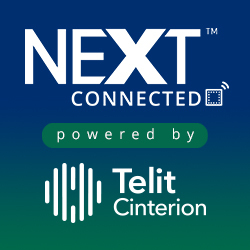Connected vehicle data will replace telematics says epyx
- March 28, 2022
- William Payne

Connected vehicle technology will become the “successor product” to telematics for fleets over the next few years as the data it provides becomes more widely available in commercially viable formats, fleet e-commerce specialist epyx is predicting. The company is working with partners to develop a fleet solution based on connected vehicle data that will replace current telematics systems.
According to epyx, connected vehicle data offers major advantages over telematics including that information comes direct from the vehicle and avoids the need for a “black box” or other intermediary device to be fitted or carried.
Debbie Fox, commercial director at epyx, said: “Fleets have been promised the benefits of connected vehicle technology for many years now but bringing it to market in a commercially viable manner has proven difficult for a range of reasons. Now, this picture is rapidly changing.
“The three stumbling blocks have been the proportion of fleet cars and vans that can provide connected vehicle data, the cost of accessing it, and the means to present that information to fleets in a format that makes it genuinely productive.
“Today, we’re in a situation where all of these issues are close to being resolved, we believe. Connected vehicle penetration within the fleet parc is already high and should represent the vast majority of vehicles by the middle of the decade.
“New ways of accessing the data at reasonable cost are now becoming available that make it much more affordable, at least comparable to the pricing of traditional telematics, bringing it within the reach of most fleets.
“Finally, providing fleets with connected vehicle data in a format that is meaningful and creates a range of cost, service and efficiency benefits is something that is very much our area of expertise, and we actively working with partners to bring a product to market.”
Matthew Waller, connected car director at epyx’s parent company FLEETCOR, argues that using data directly from OEM hardware unlocks many of the benefits of traditional telematics solutions whilst providing greater flexibility and reducing the difficulty of launching a telematics programme.
“Connected vehicle delivers the same kind of data as telematics but is effectively live and direct from each vehicle’s own management systems. In our view, it is very much a successor product, offering information drawn straight from the source.
“A key benefit is that there is no need for vehicles to be fitted with external hardware – typically requiring expensive professional installation. Indeed, access to the data can be potentially arranged in moments. This also means that commercial arrangements are simpler, with no need for an upfront investment and much more flexible contract terms.
“Of course, legacy telematics options are unlikely to disappear overnight and the product plans we are examining include the ability to consolidate connected vehicle and telematics information side-by-side with both using our expertise in data presentation.”
Ms Fox added that epyx had been in dialogue with major leasing fleets about the variety of data that could be accessed through connected vehicle – and that real-time mileage information was always top of the list.
“Mileage is a good example of how connected vehicle is an improvement over telematics. Generally, leasing fleets are only able to access a reading when service or maintenance work in undertaken but having a more regular figure would give them much better visibility over vehicle usage and costs, as well as reducing fraud. Because connected vehicle can deliver this data to the fleet without the need for a black box, it can be accessed easily at any time as long as an agreement is in place with the end user.
“Over the next few months, we’re looking to do more work on a potential product including real world trials examining a whole series of data points, ranging from GPS and odometer readings to warning lights triggered and driver behaviour. We believe there is huge potential for connected vehicle fleet products, so this is an exciting moment.”





